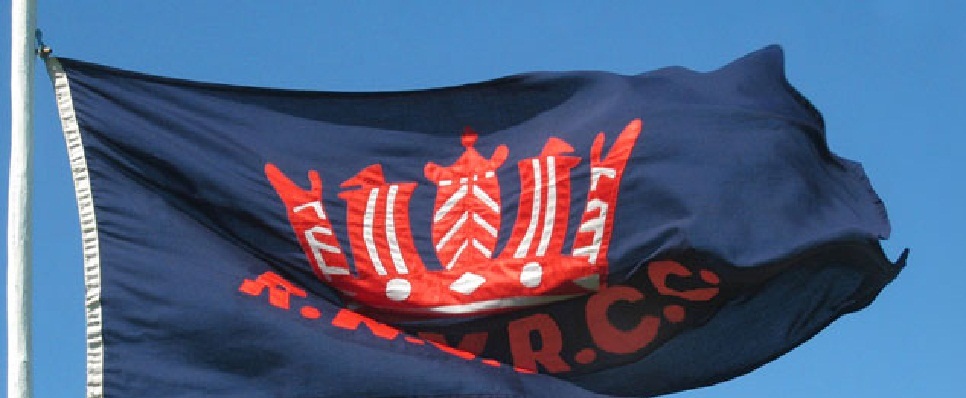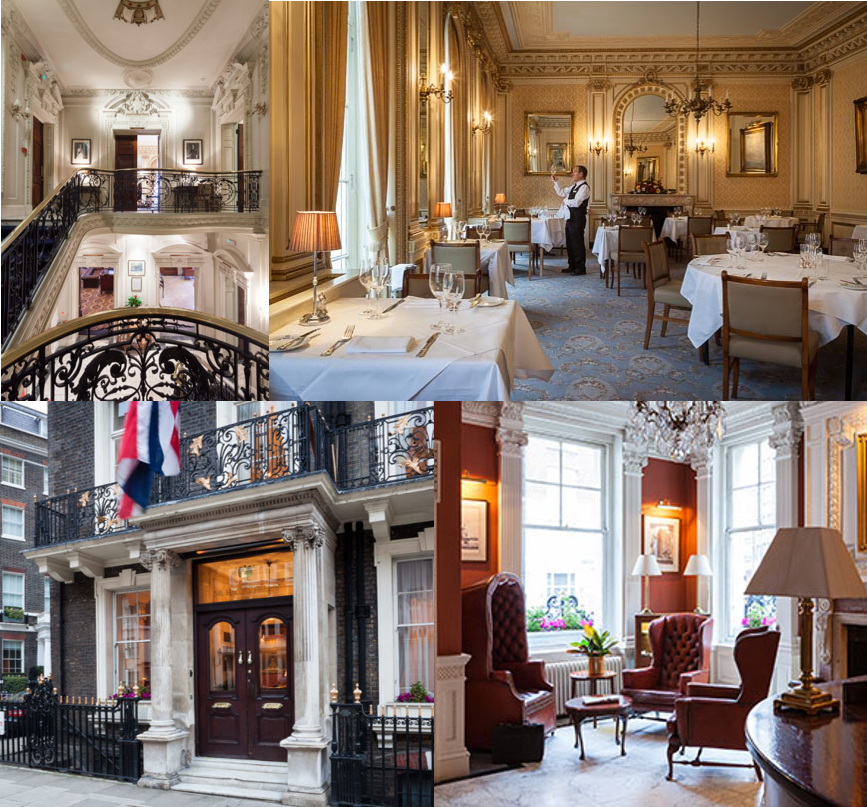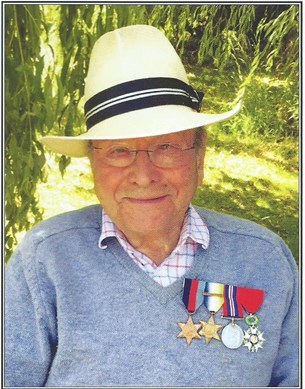Royal Naval Volunteer Reserve
Establishment of RNVR (1903)
At the turn of the 20th century, there were concerns at the Admiralty and in parliament that the Royal Naval Reserve (RNR) was insufficient to bolster the manning of the greatly-expanded fleet in the event of large-scale war. Despite the huge growth in the number of ships in the British merchant service since the RNR's foundation, many of the additional seamen were from the colonies or were not British subjects. The pool of potential RNR officers had shrunk since 1859 and experience in the Boer War showed that it would not be possible to call up a sufficient number of reservists without negatively impacting the work of the merchant and fishing fleets. In 1903 an Act of Parliament was passed enabling the Admiralty to raise a second reserve force – the Royal Naval Volunteer Reserve. While the RNR consisted of professional civilian sailors, the RNVR was open to civilians with no prior sea experience. By the outbreak of the First World War there were six RNVR divisions in major ports around the UK. By the end of the Great War, the RNVR was three times the size of the RNR.
Second World War
On the outbreak of the Second World War, no more ratings were accepted into the RNVR and new intake to the RNR stopped. The RNVR became the route by which virtually all new-entry commissioned officers joined the naval service during the war – the exception being professional mariners who already held master's tickets, who would join the RNR. All new ratings would go direct to the regular Royal Navy. An intermediate form of reserve, between the professional RNR and the civilian RNVR, had been created in 1936. This was the Royal Naval Volunteer (Supplementary) Reserve, open to civilians with existing and proven experience at sea as both ratings and officers. In peacetime this carried no obligation or requirement for service or training, being merely a register of people who could be mobilised and trained swiftly in the event of war to quickly provide a core of new personnel. By September 1939 there were around 2000 RNV(S)R members, mostly yachtsmen, who when mobilised were sent to active service after a 10-day training course while the RNVR began with a regular 12-week course for officers.
By 1945 there were 43,805 officers in the RNVR, which was colloquially called the "Wavy Navy", after the 3/8-inch wavy sleeve 'rings' that officers wore to differentiate them from their RN and RNR counterparts.By Command of King George VI in 1952, these were replaced by the straight rank lacing used in the full-time RN, with the addition of a small 'R' in the centre of the executive curl on cuff and epaulette insignia. From 30 November 2007, mainly due to increasing involvement of the RNR in RN operations and deployments, the wearing of the distinctive 'R' was discontinued for all other than honorary officers. Similarly, RNR ratings no longer wear RNR shoulder flashes.
Post War
From 1938 until 1957, the RNVR provided aircrew personnel in the form of their own Air Branch. In 1947, their contribution was cut to anti-submarine and fighter squadrons only. By 1957, it was considered by the UK government that the training required to operate modern equipment was beyond that expected of reservists and the Air Branch squadrons were disbanded. (The US government took a different view, and the US Navy and Marine reserve squadrons today still operate front-line types alongside the regular units.) The Air Branch was reformed at RNAS Yeovilton in 1980, though it is only open to service leavers.
The British naval reserve forces were amalgamated in 1958, and the RNVR was absorbed into the much larger RNR organisation. After 100 years of proud service, the RNVR as a separate professional naval service ceased to exist. Today the majority of Merchant Navy Officers who would have joined the original RNR are now encouraged to join the modern RNR's Amphibious Warfare (AW) Branch. The centenary of the formation of the RNVR was commemorated by the RNR in London in 2003 with a parade on Horse Guards, at which Prince Charles took the salute.
Sadly the COVID pandemic shut the Naval Club as it did so many other establishments and the management took the decision to remain closed. The building was sold by December 2021. The existing members were invited to accept a five year membership of the The Army and Navy Club, 36-39 Pall Mall, SW1.
RNVR CC

The RNVR cricket club, along with the rugby club, were both founded shortly after the end of the war, as a means of maintaining and building upon shared experiences made at sea. It allowed friendships to continue in a different field of battle! Founder members included Arthur Hensher and Sir Patrick Sergeant, now a Vice President, who holds the distinction of being the only surviving member of both teams.
As a wandering side, RNVR CC used The Naval Club in Mayfair as its base. In the early years, the club played games on a friendly basis on both Saturday and Sunday, prior to the advent of league cricket. In its inaugural season, the RNVR CC enjoyed a full card of 42 fixtures.
As the years passed the naval connection dwindled and players came through wider friendships; Wimbledon hockey and cricket club, courtesy of Peter Connolly and Rosslyn Park rugby club. Eddie Cox, Andrew Cronin and Martin Miller were among the last two true naval recruits, having served in the Royal Navy and Royal Marines. Our current president was recruited at Rosslyn Park by Paul Yates, who claimed his naval links as living on a houseboat. “In that case”, said Bruce, “I had a fold-up canoe as child.”, “Well there you go then, captain of your own ship. You’re in!” came the response.
Over the years, the club has grown through a mixture of absorbing players from other clubs like The Flemish Giants, Lofty and The Occasionals, and our close relationships with oppositions has helped to grow the player base too; St George’s Hospital, Barnes and the Lord’s Travellers, are all sources. Beyond that, we have a good spread of sons following fathers into the club, and finally, friends of friends and university contemporaries joining, together with the odd itinerant traveller. They are all welcome.
RNVR Club Officers
| 2012 - | D.B.Crichton | W.F.C.Allen, Dr P.Ford, C.R.Crichton, P.N.H.Barker, J.H.A.Connolly, J.R.St V.Miskin |
| 1985 - 2011 | A.G.Hensher | P.M.Connolly, C.A.H.James, L.V.Fennelly, G.Prince, R.D.Gee, B.E.M.Cole, A.C.Cronin, E.G.Cox, N.D.Morgan, M.S.Miller, D.B.Crichton, Sir P.Sergeant, P.C.Thomas, R.P.Vacher, G.J.Wyles |
| 1964 - 1984 | Dr A.J.D. Lewis | Commodore Earl Howe, Viscount Astor, Lt Com R.L.Bristow, B.A.Crabb, W.E.Cutts, Dr C.S.Drawmer, L.A.Edwards, C.Adamson, R.F.Hazell, C.S.Trouss Youle, L.C.Asser, E.Belham, Rt Hon Viscount Boyd of Merton, M.Bennet, J.F.Cadenhead, and others |
| 1946 - 1963 | | |
| 2018 - | C.R.Crichton | | C.Bridges, E.Hawkins, J.Massey, N.Priddle, G.Taylor, B.Dale, M.Pepler, H.Phillips, R.P.Vacher, R.Maroof, M.Saunders, A.Massey, T.Hardman, T. Warnes |
| 2013 - 2017 | R.Vaughan | | C.Bridges, C.R.Crichton, J.Massey, J.Staples, G.Taylor |
| 2007 - 2012 | Dr P.A.Ford | R.Vaughan | |
| 2005 - 2006 | Maj A.Liddell | W.F.C.Allen, C.R.Crichton, J.Deane | J.Deane, M.Jones, J.Richards, G.Slora, R.Vaughan |
| 1997 - 2004 | R.P.Vacher | Maj A.Liddell | P.Barker, C.R.Crichton, D.B.Crichton, J.Connolly, Dr P.Ford, C.Simpson, J.Staples, C.Perkin, Dr M.Sinha, A.Horsbrugh-Porter, N.MacGregor, W.Buckland, Dr P.De, J.Deane, G.Slora, H.Bennett, A.Cooper, M.Jones, W.F.C.Allen |
| 1983 - 1996 | D.B.Crichton | N.D.Morgan, K.Ronaldson, R.P.Vacher | A.G.Hensher, D.Kibble, N.D.Morgan, B.White, K.Ronaldson, Thain, Dr A.Simpson, R.Holliday |
| 1964 - 1982 | A.G.Hensher | E.G.Cox, A.C.Cronin | |
| 2019 - | C.R.Crichton | | R.P.Vacher | G.Taylor |
| 2012 - 2018 | T.Hardman | | R.P.Vacher | N.D.Morgan |
| 2004 - 2011 | N.D.Morgan | C. Perkin | N.D.Morgan | N.D.Morgan |
| 1997 - 2003 | N.D.Morgan | W.F.C.Allen | N.D.Morgan | N.D.Morgan |
| 1995 - 1996 | N.D.Morgan | P.Jordan | N.D.Morgan | N.D.Morgan |
| 1978 - 1994 | P.M.Connolly | P.M.Connolly | P.M.Connolly | P.M.Connolly |
| 1966 - 1977 | | | | |
| 1964 - 1965 | B.E.M.Cole | A.C.Cronin | M.S.Miller | E.G.Cox |
The Naval Club
History
As early as 1943, Royal Naval Volunteer Reserve (RNVR) Officers serving in nearby Whitehall had an aspiration to keep in touch with one another when the war was over. They formed the RNVR Officers’ Association and purchased the freehold of 38 Hill Street in 1946 from the Astor family and it has been the home of the Association and The Naval Club ever since.
In June 1954, 38 Hill Street, in the heart of Mayfair, just off Berkley Square, was dedicated as a War Memorial to the RNVR and houses the Roll of Honour of all RNVR officers and ratings who died in the service of their country. The RNVR was first formed in 1873 and provided continuous service to the country from 1903 to 1958 when it was unified with Merchant Navy officers willing to volunteer to form the Royal Naval Reserve. On 22 November 2000, His Royal Highness the Duke of Edinburgh unveiled the RNVR Roll of Honour which lists all Naval Volunteer Reserves who died, including those of the Dominions and Commonwealth.
In 1987, the house was listed as a Grade II building with particular reference to the grand staircase, with its ornate balustrade decor and wrought ironwork, and the first floor Louis XVI style dining room.

Club Ethos
The Naval Club was sold in 2021 and it's assets transferred to The Army and Navy Club in Pall Mall with it's extensive collection of Naval paintings, books and memorabilia. While they kindly recognised the RNVR CC as their cricket club, we now are allowed to hold our pre-season Cocktail Party and luncheons/dinners at the RAG. It’s still the naval crown that we use as our club logo.
.jpg?mode=max&format=jpg&quality=85)
ARTHUR GEORGE HENSHER
.jpg?mode=max&height=214&width=194)
25th April 1924 - 10th July 2019
President Emeritus, RNVR CC
The RNVR CC owes its very existence and longevity to Arthur's longstanding commitment to the club's success and well-being over more than seventy years. Without him we would have undoubtedly disappeared long ago like so many other clubs.
During the Second World War, as part of Operation Overlord (D-Day) in 1944, Arthur was 1st Lieutenant Sub Lieutenant of Landing Craft Tank, HMS LCT 1315, carrying tanks and aero engines to the Normandy beaches. He landed nine Sherman tanks on Juno beach on D-Day +1 and made fifteen further trips across the channel, for which he was awarded Chevalier Légion d'honneur. This award, established by Napoleon in 1802, is the highest French order of merit for military conduct.
Aside from his military honours, Arthur was an accomplished musician, a jazz drummer. This proved to be a lifelong passion. He equally had a love of cars, as many a cricketing opposition will attest, recounting him putting his team to shame by turning up to games in his rather splendid Rolls Royce.
As for Arthur's actual cricketing prowess much must now reside in myth and conjecture and was always hard to corroborate. However, evidence has been unearthed at Cuckfield CC, one of his favourite grounds, that he did take 7 wickets for 43 in 14 overs including 3 No Balls, as evidenced by the scorecard which hangs in their pavilion. In later years Arthur, with a twinkle in his eye, remembering that spell explained that he had modelled his action on that of Keith Miller, rather than the other way around.
His prowess with the bat was harder to determine but an innings containing a remarkable number of sixes struck in a valiant rear-guard action in a losing cause in 30 minutes, allegedly at Outwood (but more likely Guy's Hospital at Honor Oak Park) was both actually witnessed and celebrated for many hours (and years).
His cheerful weekly greeting accompanied by "mine's a half" and the incomparable singing, with accompanying actions, of the Music Man after games will all be missed in many a clubhouse and by RNVR members of a certain age.
Arthur’s ashes are scattered at the foot of the tree in the outfield of the main ground at Cuckfield, surrounded by a bench which bears his name, amongst others.

.jpg?mode=max&height=381&width=197)
.jpg?mode=max&height=385&width=760)
PETER M CONNOLLY
.jpg)
1920 - 1994
Peter was, like Arthur Hensher, associated with the RNVR CC from it's inception until his death.
Slightly older than Arthur, Peter had been involved in the D-Day landings too. He joined the vice president's list, at the top, in 1985, the first year that AGH was recognised as President. When the exercise to upload the scorecards back to 1976 started I wondered if there was enough time for Peter to show up as a cricketer.
Those who had started at the same time in 1946 had had too few recorded appearances, too late in life, to reflect their very best selves. Peter was no different. In 1976 he was 56 and in 1980 he had is first heart attack.
Despite this the record shows him taking over 100 wickets for the club, currently in fourth place officially. He would undoubtedly have been the clubs leading wicket taker if all records were kept. His 30+ years would have seen to that. We may have to adjust down the thought that he could have taken 1,000 wickets (there have been over 5,000 attributed to bowlers thus far), but with approx 30 years of approx 30 games a year missing which is about as many games as are currently recorded it may have been achieved.
One thousand is nothing by any other club standards, but head and shoulders above the rest of the RNVR.
Added to his playing brilliance was his recruitment work; being club and fixture secretary and probably match manager for all games for at least 10 years. He was a regular scorer and umpire too.
BRIAN COLE
1932 - 2020
Brian, a decade after Arthur Hensher and Sir Patrick Sergeant, was an early member of the RNVR CC and introduced his great friend, Eddie Cox, after National Service. An active member for well over sixty years, Brian was an accomplished but very modest cricketer; a seamer with a high action who neatly bridged the batting order between the graceful and the tailend.
He was a very supportive club member; secretary in the sixties and became a vice president in 1991; always attending the vice president lunches and ever keen to hear news of the playing club and share self deprecating stories. He was closely associated with cricket at Cranleigh school, which he had left in 1950, and was still playing for, with success, in the 1970s.
His recorded RNVR cricket is very limited given the paucity of scorecards prior to 1976;
https://rnvr.hitscricket.com/memberprofile/memberID_344196/Brian-E-M--Cole.aspx
Outside cricket, he had worked at Lloyd's and was a Name.
I can hugely recommend the lovely obituary I found on the website of the Old Cranleighan CC, written by OCCC former President and team mate John W R Cooke, added here with permission.
https://www.ocsociety.org/cricket/2020/06/06/a-consummate-oc/
SIR PATRICK SERGEANT


NICK DAVID MORGAN
.jpg)
1945 - 2025
Nick Morgan was a member of the club for 50 seasons, playing his first recorded game in 1976. Only 38 people have played more times. He was a match manager and a vice captain.But it was Nick's contribution after playing; "stopped far too soon" quoted the then skipper, later President, Bruce Crichton, when faced with a pool of lesser talent, that marked his contribution.
He holds a number of batting partnership records, against clubs we no longer play, so unlikely to ever be beaten. At The Odney Club he appears alongside his son James too.
Nick succeeded Peter Connolly as Treasurer (1995-2018), and Peter, as both Secretary and Fixture Secretary (1995-2011). He advised and supported every Captain for over 30 years and was invited to be a Vice President by Arthur Hensher in the 1990s.
He was also custodian for many years of much of the club's physical history.
On every matter of importance to the club for the last three decades he shaped strategy with kindness and professionalism. As an accountant specialising in the third sector he maintained a roster of loved clients long after he had left professional employment.
Alongside the RNVR Nick supported the MCC, The XL Club and his old team The Dominos.
Photo at Oxshott, now Maori Oxshott.